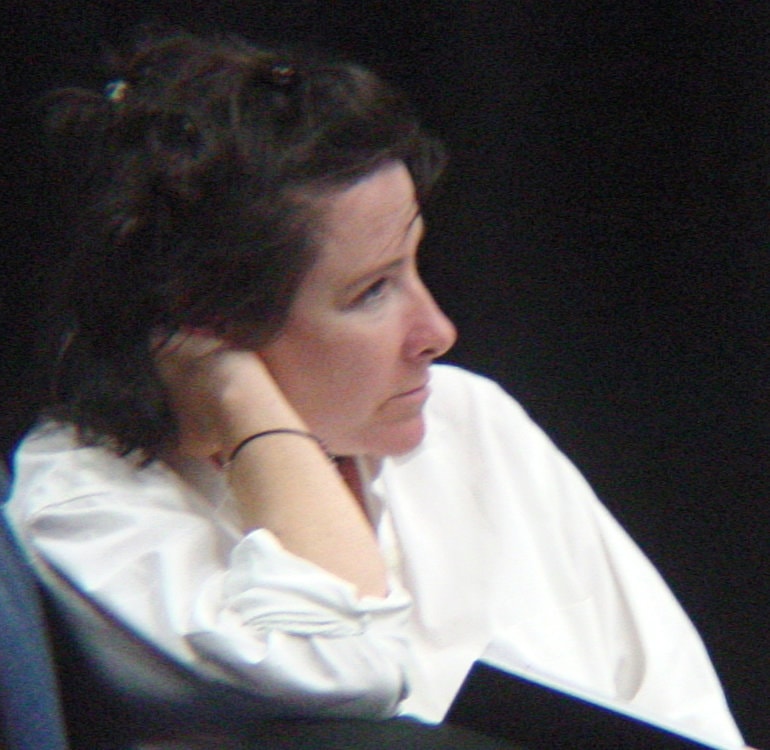Moderated by: Win Burleson
Cynthia Stokes began her talk with the comment, “One of the questions I think we all have had to ask ourselves over these last couple years is how do we keep ourselves engaged in our work? And I really discovered that I have to put myself into experiences that produce a certain amount of personal terror.” She also mentioned that along with terror there needs to be the persistence of love and attention to sacred connection between the viewer and the performer.
As an opera director Cynthia specialized in site specific productions. The pandemic led her to explore the role of VR technologies in the future of opera. She focused her talk on her collaborative project with Peter Torpey and Michael Chioldi, The Andrée Expedition, a 360° VR Opera where an audience of one experiences the tragedy unfold from a virtual pack ice with the opera singer and pianist.
The opera is based on the true story of three men, who in 1897 attempted to circumnavigate the North Pole in a hydrogen balloon. A quarter of a century later, their bodies were discovered on Victoria Island in Norway. The expedition’s leader’s diary was packed away in straw and, as he was dying, it was clutched in his hands. Love letters written by Neil Sternberg, one of the crew, to his fiancée were delivered to her 30 years after his tragic death.
The opera originally conceived for an outdoor site by necessity had to be done in 360° VR but well into the project the collaborators discovered a footnote in a Swedish museum that the undeveloped film that Neil Sternberg was attempting to photograph was actually a 360 degree diorama of the Arctic. Cynthia commented, “So in a way we are completing his project and you will be part of the experience when you watch the piece in the VR headset.”
Kevin Black focused on his upcoming production Hamlet: Fine Revolution which contemporizes Hamlet by bringing awareness to issues of mental health and the effects of technology in our daily lives. Black states, “It was from the beginning meant to be a play, an experience that placed the audience member centrally so that they were in the midst of this story unfolding around them. It’s important that it stay within the live theater realm so that the audience’s experience is embodied. There are certain parameters that we need to pay attention to now, but it’s a very intimate piece and it’s meant to be something that is experienced quite viscerally and quite personally, changing the point or points of view that the audience has while they’re experiencing the piece. “
A question from Win drew out the spatial relationships and diverse uses of technology, ranging from low tech to high tech as it effects the relationship to audience. A participant asked about the role of art in addressing social problems, which brought up the importance of the site in how a work moves an audience as well as the importance of the smooth integration of technologies and multiple methods of storytelling. Another person asked about constraints and support. Cynthia mentioned the Arizona Arts Commission grant she received and added the most important resource she has found here at UA are goodwill and relationships. Win mentioned the technological infrastructure, the Closed Loop Sensor lab, and Vertically Integrated Projects (VIP).

Cynthia S Stokes
School of Music
Associate Professor
Associate Professor, Applied Intercultural Arts Research - GIDP
Endowed Chair, Amelia T Rieman

Kevin Black
School of Theatre, Film & Television
Professor of Practice